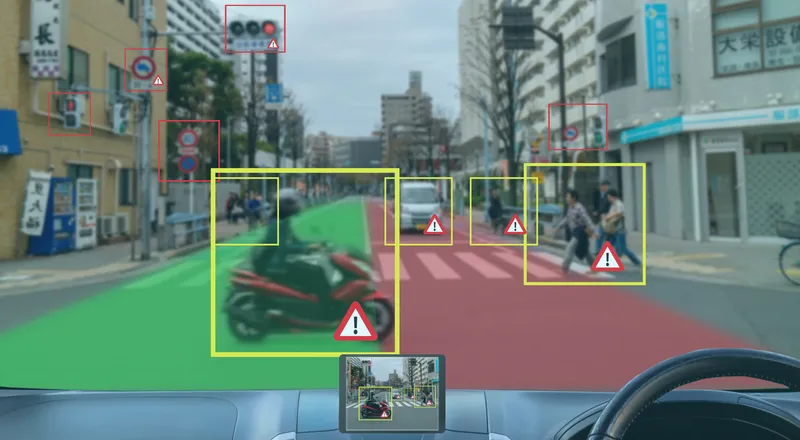New analysis from Frost & Sullivan, Strategic Analysis of Real-time Traffic Information Market in Europe and North America, finds that the number of real-time traffic information subscribers in North America stood at 1.9 million units in 2014 and estimates this to reach 14.2 million in 2021. In Europe, the number is expected to go up from 2.2 million in 2014 to 10.2 million in 2021. With traffic expanding at three times the rate of the economy, the research says the need for intelligent systems like real-ti
March 11, 2015
Read time: 3 mins
New analysis from 2097 Frost & Sullivan, Strategic Analysis of Real-time Traffic Information Market in Europe and North America, finds that the number of real-time traffic information subscribers in North America stood at 1.9 million units in 2014 and estimates this to reach 14.2 million in 2021. In Europe, the number is expected to go up from 2.2 million in 2014 to 10.2 million in 2021.
With traffic expanding at three times the rate of the economy, the research says the need for intelligent systems like real-time traffic information (RTTI) services is on the rise in North America and Europe. The emergence of smart cities and deployment of advanced technologies such as predictive traffic and vehicle-to-vehicle communication will continue to drive the RTTI market in the future. For now, the integration with public transport information to help commuters estimate their time of arrival (ETA) based on factors such as traffic flow will enable RTTI to appeal to a larger audience.
The fact that the RTTI space is yet to capitalise on the amount of data and sources currently available is an indication that adoption is bound to take off in the near future.
"Big data analytics will be the single largest technology supporting the implementation of predictive traffic, signal management, road infrastructure maintenance, and accident reduction solutions," said Frost & Sullivan Automotive and Transportation research analyst Ramnath Eswaravadivoo. "Hence, it is important that the data collector, data aggregator, and data integrator co-exist for the smooth functioning of the RTTI ecosystem."
The biggest factor restraining RTTI use is the high subscription cost. Moreover, the limit on downloading data even after end users have paid a substantial subscription fee deters adoption. Lowering the subscription fee, offering an unlimited data download limit, or making the RTTI service standard in every car for a low cost will be essential to encourage uptake.
In addition, commuters consider RTTI as just a simple navigation tool offered at an extra cost. Technology providers must conduct awareness programs and workshops to help the public understand the significance of RTTI.
"Consumers must be made aware of how RTTI can decrease emissions, waiting time in traffic, and fuel wasted while idling," urged Eswaravadivoo. "Integrating solutions into one consistent and user-friendly service rather than providing separate apps for navigation, traffic, parking and fuel will also attract more consumers in the North American and European RTTI market."
With traffic expanding at three times the rate of the economy, the research says the need for intelligent systems like real-time traffic information (RTTI) services is on the rise in North America and Europe. The emergence of smart cities and deployment of advanced technologies such as predictive traffic and vehicle-to-vehicle communication will continue to drive the RTTI market in the future. For now, the integration with public transport information to help commuters estimate their time of arrival (ETA) based on factors such as traffic flow will enable RTTI to appeal to a larger audience.
The fact that the RTTI space is yet to capitalise on the amount of data and sources currently available is an indication that adoption is bound to take off in the near future.
"Big data analytics will be the single largest technology supporting the implementation of predictive traffic, signal management, road infrastructure maintenance, and accident reduction solutions," said Frost & Sullivan Automotive and Transportation research analyst Ramnath Eswaravadivoo. "Hence, it is important that the data collector, data aggregator, and data integrator co-exist for the smooth functioning of the RTTI ecosystem."
The biggest factor restraining RTTI use is the high subscription cost. Moreover, the limit on downloading data even after end users have paid a substantial subscription fee deters adoption. Lowering the subscription fee, offering an unlimited data download limit, or making the RTTI service standard in every car for a low cost will be essential to encourage uptake.
In addition, commuters consider RTTI as just a simple navigation tool offered at an extra cost. Technology providers must conduct awareness programs and workshops to help the public understand the significance of RTTI.
"Consumers must be made aware of how RTTI can decrease emissions, waiting time in traffic, and fuel wasted while idling," urged Eswaravadivoo. "Integrating solutions into one consistent and user-friendly service rather than providing separate apps for navigation, traffic, parking and fuel will also attract more consumers in the North American and European RTTI market."









